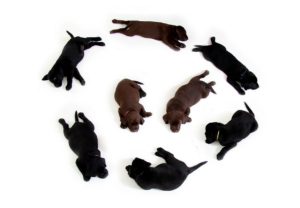What is neutering?
To neuter a companion animal is to make it so that he or she becomes incapable of reproducing.
The words “spay” and “castrate” are very close in meaning to “neuter.” The difference is that these words are gender-specific. Spaying is for female animals; it means they lose the use of their uterus and ovaries, either through surgery or the use of hormones.
Castration is for male animals; they lose the use of their testes. As with spaying, this is done either through surgery or chemical treatment.

When can a companion animal be neutered?
While the actual procedures that cause the animal to lose the use of its reproductive organs can be performed at any age, some experts suggest that there are optimal times at which it should be done.
DOGS: In dogs, neutering is traditionally done after the animal turns six months old.
Modern veterinarians, however, now suggest that companion dogs be neutered when they’re younger; current opinions say anywhere from six to eight weeks of age.
• Advances in veterinary surgery mean that the procedure can be done more safely and more effectively even on these younger dogs.
• As long as the puppies are in excellent health, they can undergo neutering early.
• Older dogs can also be successfully neutered, but they have to be watched more closely afterwards, in case of post-operative complications.
CATS: Both traditional opinions and current medical knowledge support neutering when the kitten is around eight weeks old.
• Cats are already capable of reproducing after they turn six months old.
• Veterinarians often suggest that the procedure be performed before the first heat cycle even takes place.
• For best results, veterinarians suggest that kittens to be neutered weigh at least two pounds before undergoing the procedure.

How is neutering done?
(OPTION 1: Surgical) In the past, neutering almost always meant a surgical operation. The animal is given sedatives and painkillers before an incision is made into its abdomen. This incision gives the veterinarian access to the animal’s reproductive organs.
Spaying affects a female animal’s uterus and/or ovaries. Traditionally, all of those organs, plus the various ducts connecting them, were completely removed. Other options involve the removal of the ovaries only, or the removal of the uterus only.
Castration affects a male animal’s testes, and is done in several ways. A complete extraction physically removes those organs from the animal’s body. A rubber band can also be secured around the testicles, disrupting the blood supply to those organs and preventing them from functioning properly. A third option involves the use of emasculators, which are tools that can squeeze or crush the spermatic cord completely; in this case the male animal can still produce sperm, but won’t be able to ejaculate it.
A vasectomy (for males) or a tubal ligation (for females) results in sterilization, but since the sex organs are still intact and functioning, the animals will still feel the effects of the various hormones secreted by those organs.
(OPTION 2: Chemical) Some veterinarians now offer chemical neutering as an alternative option, especially in male animals. A nontoxic chemical is injected into the testes, which causes the cells of that organ to die off.

WHAT ARE THE ADVANTAGES OF NEUTERING?
• Reduced reproductive drive
• Reduced tendency to run away from home
• More docile temperament when interacting with other humans or animals
• Decreased risk of developing certain types of malignant tumors in the breasts (in female animals) and testicles and prostate gland (in male animals)
• Decreased risk of developing uterine infections (in female dogs) and urinary tract infections
• Increased chance to live longer lives
Where can I have spaying and neutering done?
In the Philippines, it’s possible to get in touch with various veterinary clinics or animal hospitals to book an appointment for spaying or castration, although rates may vary according to the provider. The alternatives include CARA and PAWS, who tend to offer these services at somewhat more reasonable rates.
Some reminders: Before your companion animal undergoes any procedure related to neutering, ask your veterinarian for pre-surgical advice. For example, depending on the age of the animal, you may need to withhold food and/or water for a specific period of time before the operation. Check with the clinic or hospital to see if there are any other restrictions.
Your veterinarian will also give you instructions for caring for your pet after the operation. You may need to administer painkillers, in which case you’ll need to follow instructions very carefully. Make sure that your pet doesn’t lick the incision site, or run around too much, to decrease the risk of postoperative complications.
.org/resource/spayneuter-shelter-healthanimal-care/benefits-and-best-practices-pediatric-spayneuter
This story appeared in Animal Scene’s February 2017 issue.






